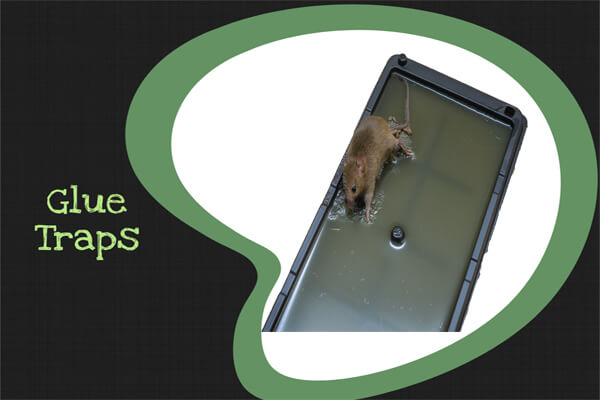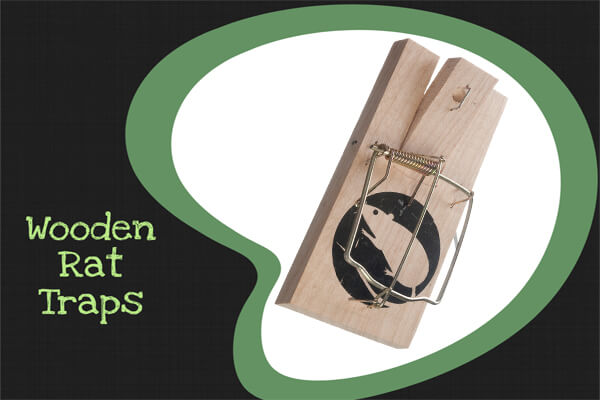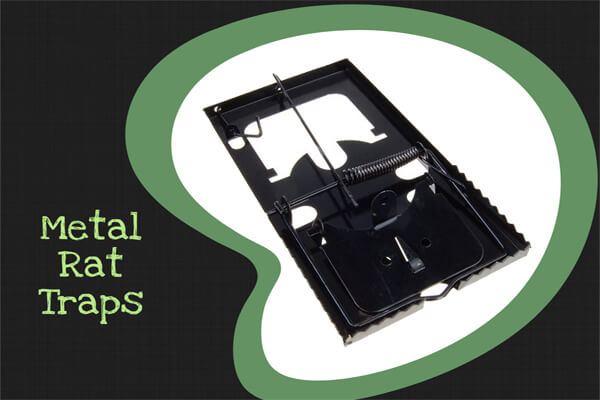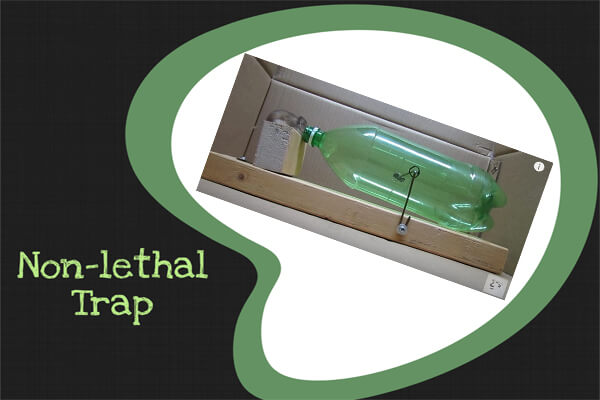Signs of Rats | How to Catch Rats | Homemade Rat Traps
Rats are common rodents which are now everywhere in the world. These are often confused with mice and mouse. Rats are bigger in size and are wild too. These small animals can cause a lot of harm to the house if not taken care of, although a lot of people prefer to keep them as pets, but it is till unhealthy to keep the around kids and pets.
Signs of Rats
There are various signs which help the homeowners to know that rats are present in the home. Some of them are mentioned below:
1. Rat Droppings
Rats excrete by droppings. Spotting them is a sign of their presence. Fresh droppings are dark in color and soft in texture whereas after 3-4 days, they harden and lose their color.
2. Marks
They always travel the same way and leave “smudge marks”. These “smudge marks” are a buildup of dirt and oil from their fur. They keep indoor ways free of dust for their travel. Footprints can be seen in dusty location. Tracking dusts such as talcum could be used to track whether they are frequently visiting a particular area.
3. Pet Behavior
If you own a pet – dog, for example. If the dog gets excited for no reason, there is a possibility of the presence of rodents. They also make sounds while climbing and moving.
How to catch them
To catch them, you should act patiently. Rats won’t change their territory frequently because of Neophobia – fear of new object. You need to act smartly for the same.
Using rat traps over several poisons is a smart move as it won’t be hazardous due to the absence of chemicals. It also eliminates the rat death at inaccessible locations and thus can prevent possible odor problems.
Set traps close to the walls, behind the objects, in dark corners or the places where droppings were present, footprints were left. They should be set in a way that the rat will pass through it.
If a rat skips the trap without getting caught, be sure that it won’t catch the rat ever. As a consequence of the fact that different species have different eating habits, you should choose the bait wisely.
An abundance of food makes the trapping difficult. Also baits must be replaced in a day or two to keep them fresh.
You can follow below steps to prevent their presence:
Find the Troubled Spots
The most important sites are burrows, droppings, tracks, runways and food packages.
Seal Openings that let them enter
Rats can enter any opening that is ½ inch wide. Therefore it is considered wise to seal any cracks and holes. All openings of water pipes, for example, should be properly sealed as well.
Eliminate food sources
Garbage shouldn’t be stored in plastic bags. Pet food shouldn’t be left outside. Don’t put food scraps in compost piles.
Why rats are so hard to trap?
Planning to trap a rat may sounds easy but this isn’t an easy task. There are various reasons for the fact that rats are difficult to catch. Some of the reasons are below mentioned:
They are larger than mice
Traditional rodent traps are not designed to catch rats. People usually don’t know whether they’re dealing with mice or rats- they just know that they have heard something.
So, they set up the traditional rodent traps for both of them. But when it comes to rats, many common traps are a waste of an individual’s money and time.
A rat could be 7-10 inches in length which is almost double when compared to a typical house mouse. As a consequence of this unawareness, these rodent traps can’t be used.
They reproduce fast
Rats can reproduce fast. They reproduce every 21 days, so it is quite difficult to capture the entire family using the traditional trapping techniques.
They travel carefully
Rats always play safely by moving across the walls and fences in short steps. It is quite difficult to trace their pathway.
Different species have different diets
Most of the rat traps rely on bait for the trapping of the rodents. People often use bits of cheese as bait and wonder why their trap isn’t working. This is because of the fact that different species of rats eat different types of food.
Let us consider an example. Black rats usually live in roofs and tree tops and therefore are attracted to plant based foods and not dairy products.
Rats may Learn
Sometimes this could act as a boon and sometimes as a bane. If they learn where to take the bait, it’d help us. But sometimes it can prevent a trap from acting properly. Be one step ahead always.
They’re cautious
They always avoid something new if they can until they become used to of it. As already mentioned, they always avoid running across open places.
Types of Rat Traps and How they Work
1. Rat snap traps
Several improvements have been made over the years from typical wooden snap traps.
It has the following advantages:
- It is not expensive.
- It will instantly kill a rat.
The disadvantages are below mentioned:
- The spring on the snap trap is so strong that it could break a finger.
- Keep it out of reach of your pets and children.
2. Glue traps
As the name suggests, glue is used for the trapping purposes.
It has the following advantages:
- These are safer than the rat traps due to some of the safety measures.
- These are hideous so the rat is suspicious of the new object.
- Less costly than snap traps.
- Can be used in a variety of places
Some of the disadvantages are:
- They need to be kept in a dry and dusty area.
- There is a possibility of the rat surviving the glue trap.
After inspecting the areas which are the path for their travel, place the rat glue boards in those areas. Place them where there was rodent activity.
3. Live animal traps
These are the easiest traps for the trapping of rodents. Simply bait it and carefully release it outside.
The advantages of using an individual rat traps and the disadvantages were mentioned above.
Some of the common advantages are mentioned below:
- Poison rodent baits can be hazardous to children as well as pets. It could be safer by using non- poisonous baits.
- For smaller rat infestations, rat traps provide quick results.
Some of the common disadvantages are:
- If the rat infestation is severe, trapping can be time consuming.
- Some of the rat traps can severely injure people, pets or children. So we need to use them carefully.
4. Electronic Rat Traps
These are readymade Rat Traps available in the market as well as online stores. These are easy to set up; works both on rats and mice, kills quickly and easily and is convenient for the disposal of the remains.
As a matter of fact, you’d never even touch the rodent and it would be killed and disposed as well. It stops the rodent’s heartbeat completely. Be strategic while using the electronic rat trap.
These rat traps are powered by batteries which, according to the manufacturer, would kill around 50 rats. There are LED indications to state the facts whether the dead rat is to be disposed or not.
5. Wooden Rat Traps
This is the economical way of controlling rats. It is reliable and easy to use as well. You should use it after sensing the presence of the rats and use at the places already described.
6. Metal Rat Traps
These metal rat traps are vigorous yet easy to set, giving the trap a solid base together with a powerful mechanism. In our field tests, the strength of this rat trap and results we’ve seen from it, far exceed that of the wooden or plastic alternatives.
Rat traps are an excellent way to deal with a small infestation, but we would recommend combining rat traps with poison if you have a larger infestation.
7. Non-lethal trap
A non-lethal trap is one where the wires, it is constructed of, are cut and formed into a funnel shape directed into the body of the cage. This design is usually shaped with the funnel at the crown.
Rats are extremely flexible and can push through the narrower opening into the cage, but cannot escape due to the ends of the wires poking them in the face. The advantage of this design is that it can catch more than one rat at a setting.
Homemade Rat Traps
We can also make a homemade rat trap for the purpose of catching a rat. These aren’t difficult to make. People are always suspicious of whether home rat traps will work or not. This entirely depends on their manufacture.
The way you make them will decide whether it will work or not. The location also plays a key role for the same. An ideal home rat trap with the help of materials available at your residence could be made by using any of the following methods:-
1. Sticky traps
- This type of trap is made using a special adhesive applied to the board.
- The board could be a cardboard, plastic tray etc.
- The special adhesive often has a flavor that is pleasant to the rats.
- It’s non-advisable to put the traps in the natural environment because the glue will dry up quickly.
- Catching rats on such sticky traps is convenient and cheap.
- Do try to put some bait to attract them and therefore yield better results.
- It is advisable to check those traps frequently because if the rat gets trapped, the rat will cry bitterly.
2. Bucket Rat Trap
Make a bucket and spoon rodent trap
- This is a homemade rat trap from a ladle and a spoon.
- It is classified amongst the best homemade rat traps.
- For optimal results, you need a huge bucket, a spoon and some bait. Bait could be peanut butter.
- Spread the bait on the handle of the spoon and put it across the bucket.
- The moment the mouse climbs to get peanut butter, it will fall into the bucket with a spoon.
- There’s nothing to worry about when it comes to wasting cutlery, as you can make it using other materials such as tissue paper roll, paper plates etc. as well.
Make a bucket and dog food rat trap
- Put some dog food in a bucket with a lid.
- Cut a hole in the lid.
- The mouse will be able to get on the lid and go into the bucket, but will have a hard time trying to hop out.
3. Trap from milk bottles
- A good homemade trap can be made out of a milk bottle.
- To execute the same, take a bottle and pour oil on the wall in order to make it slippery.
- Bait should be placed inside.
- Also, a rail should be attached so that the mouse can climb up the rail.
4. Rat traps using recycled water bottles
- A 1.25 L, scissors, tape and cart knife are needed for making the trap.
- Cut the neck of the bottle.
- Make a mark below the cutoff region.
- Make the cut 1 inch below the marked section.
- Now make another cut about 2 inches down from the cut just made.
- Keep the larger pieces aside. These will serve as our traps.
- Take the smaller top section (which will be the funnel) and cut some slices about 1 inch long down it, starting from the end you removed the thread/opening off.
- Make the cuts at diagonals to form spikes.
- They do not need to be spikes, but have to deter the rodent from trying to climb/jump back up the funnel.
- Apply some tape around the rim of the funnel and insert the funnel into the bottom of the funnel.
- Fold the tape over the edge to seal the funnel in place.
- And your trap is ready.
Conclusion
Rats are a bit of a nuisance and create a lot of mess if they enter the house. And dealing with them is the most difficult and stressful job to do. The above listed traps and methods, if used in a right way, will help you to get rid of these rodents.







